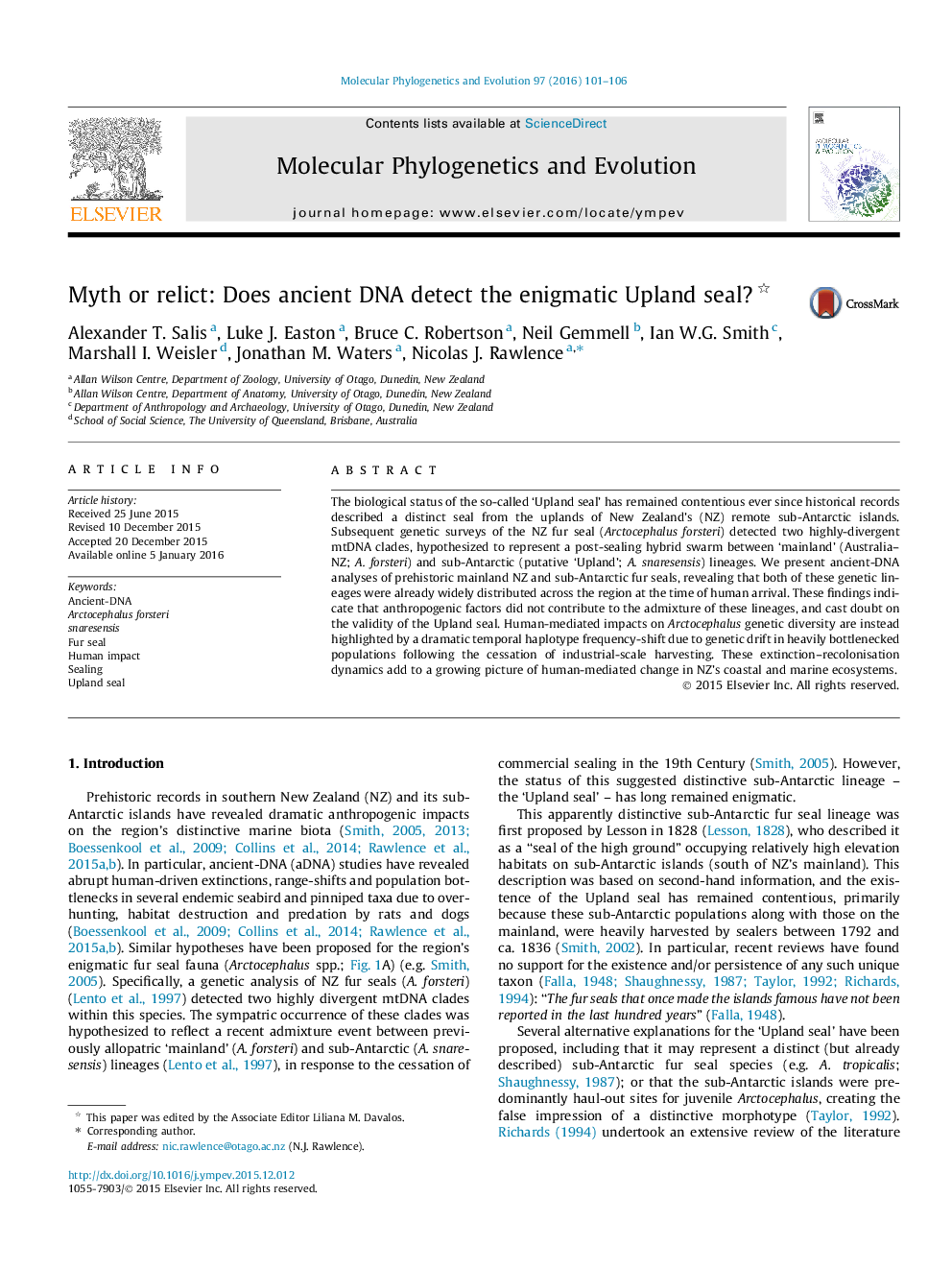| Article ID | Journal | Published Year | Pages | File Type |
|---|---|---|---|---|
| 2833697 | Molecular Phylogenetics and Evolution | 2016 | 6 Pages |
•No prehistoric genetic evidence for the enigmatic ‘Upland seal’.•Ancient DNA reveals rapid temporal shifts in NZ fur-seal genetics.•Human harvesting led to a dynamic history of extirpation and recolonisation.
The biological status of the so-called ‘Upland seal’ has remained contentious ever since historical records described a distinct seal from the uplands of New Zealand’s (NZ) remote sub-Antarctic islands. Subsequent genetic surveys of the NZ fur seal (Arctocephalus forsteri) detected two highly-divergent mtDNA clades, hypothesized to represent a post-sealing hybrid swarm between ‘mainland’ (Australia–NZ; A. forsteri) and sub-Antarctic (putative ‘Upland’; A. snaresensis) lineages. We present ancient-DNA analyses of prehistoric mainland NZ and sub-Antarctic fur seals, revealing that both of these genetic lineages were already widely distributed across the region at the time of human arrival. These findings indicate that anthropogenic factors did not contribute to the admixture of these lineages, and cast doubt on the validity of the Upland seal. Human-mediated impacts on Arctocephalus genetic diversity are instead highlighted by a dramatic temporal haplotype frequency-shift due to genetic drift in heavily bottlenecked populations following the cessation of industrial-scale harvesting. These extinction–recolonisation dynamics add to a growing picture of human-mediated change in NZ’s coastal and marine ecosystems.
Graphical abstractFigure optionsDownload full-size imageDownload as PowerPoint slide
